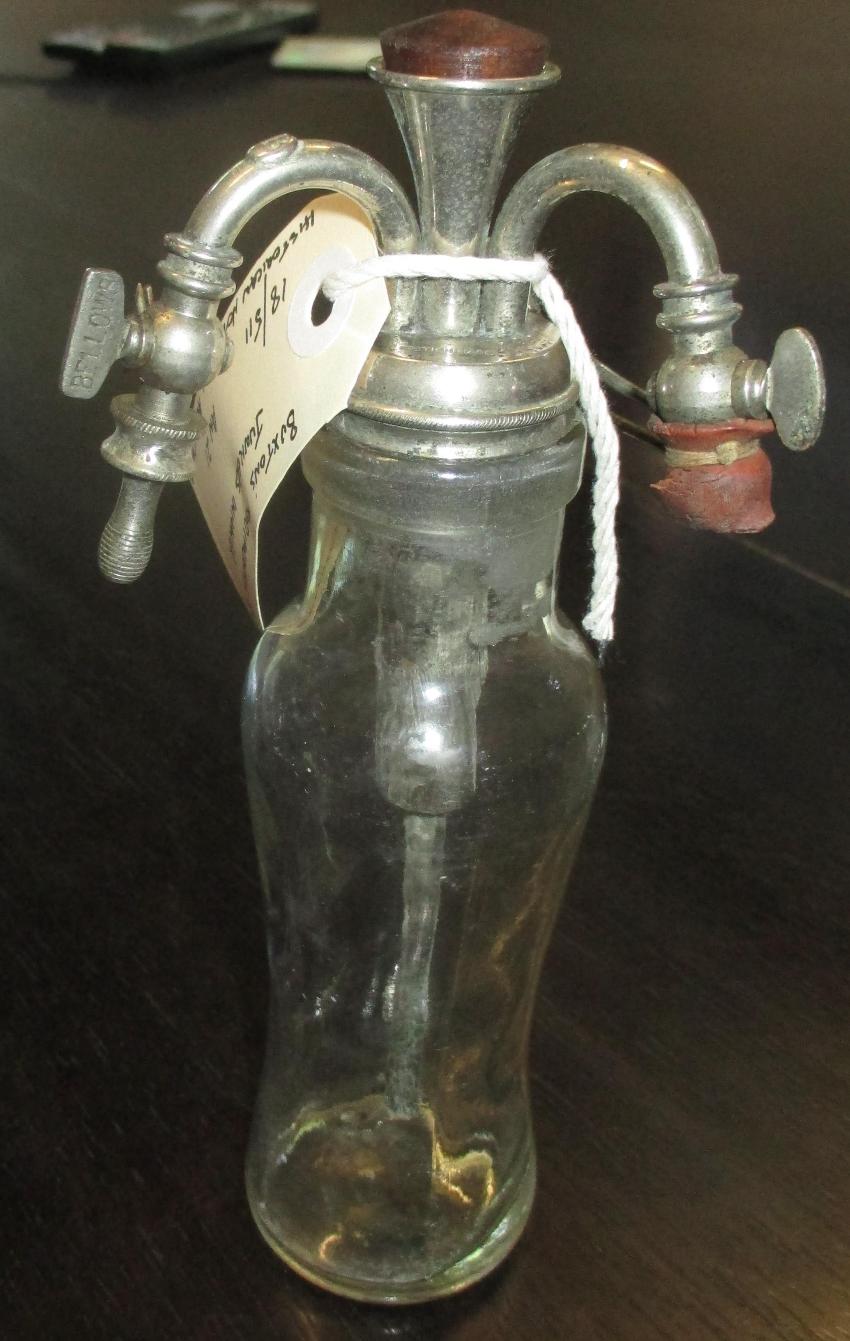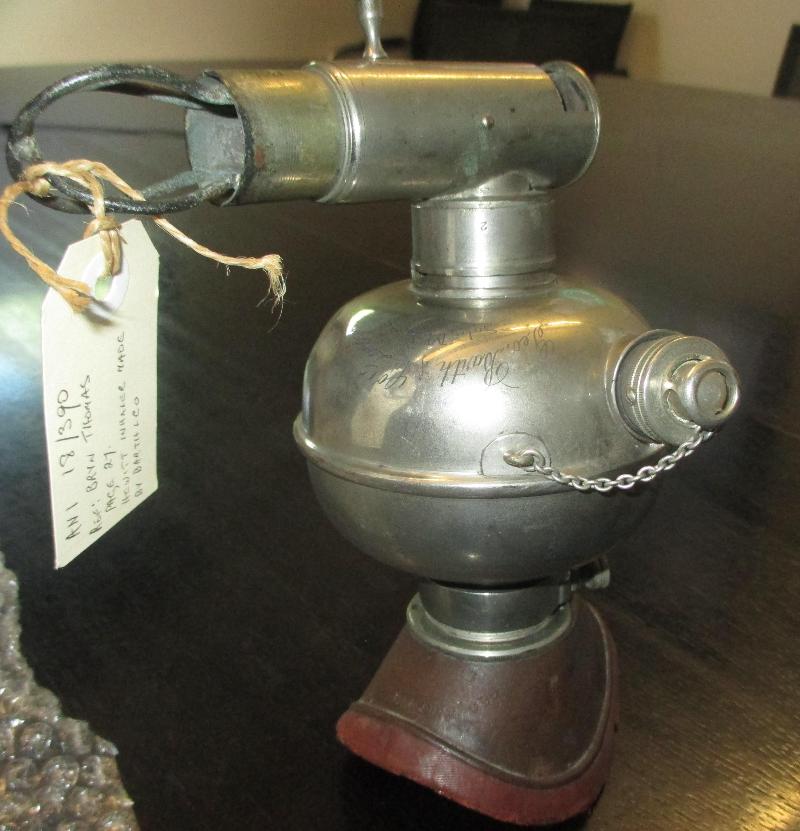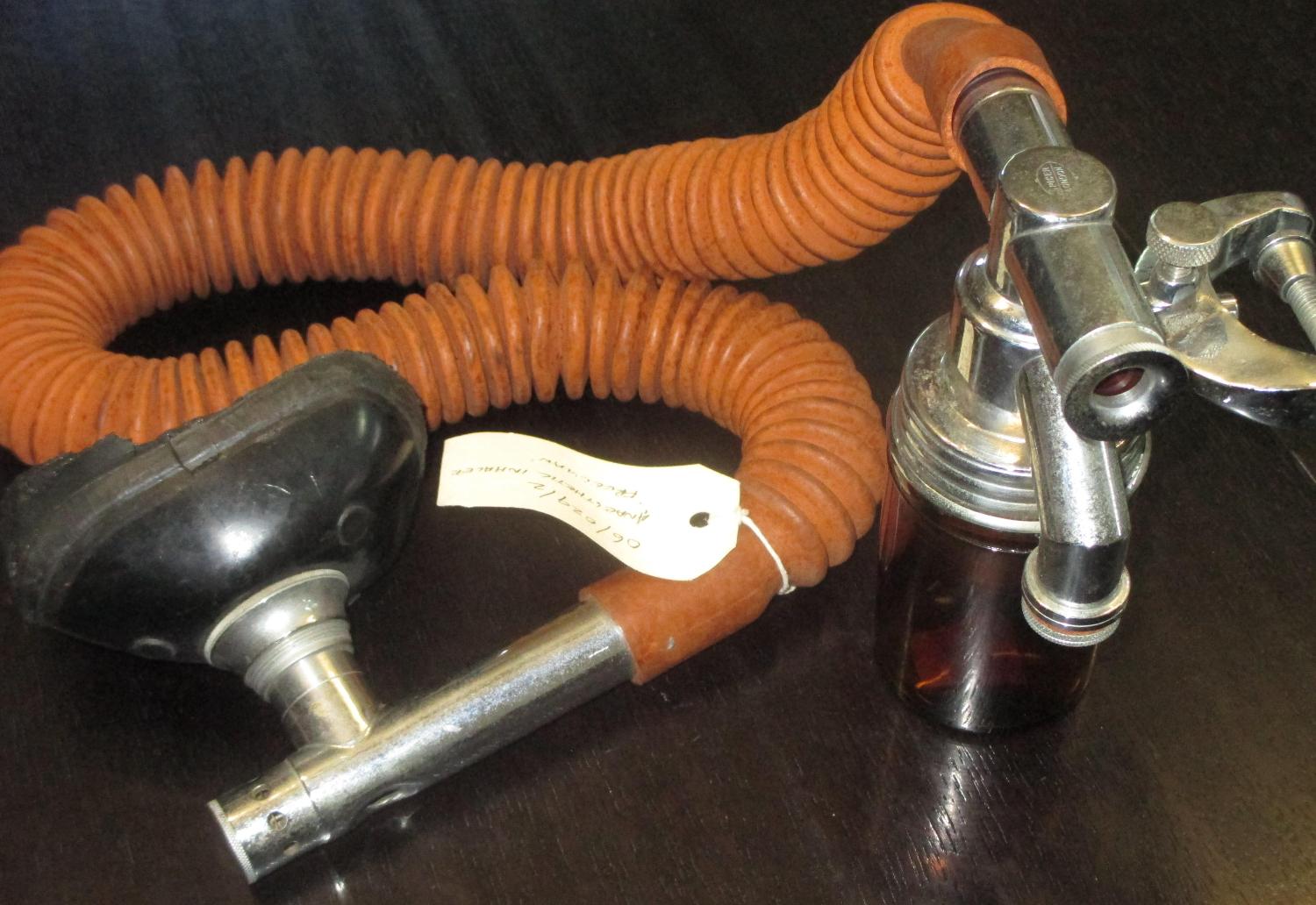A quick whiff of the Anaesthetic Collection
Up until the time Queen Victoria began her reign, the only mind altering agents available were alcohol and opium so any operative procedure was virtually performed “cold”. Chemists were preparing substances mainly in the search for solvents and had combined ethyl alcohol with sulphuric acid to produce diethyl ether (ether). This was called ‘Sweet Oil Of Vitriol” and had an unpleasant smell, was fairly volatile and supported combustion1. It was difficult to conceive that this substance could be inhaled and would produce a state whereby operations could be performed without any discomfort to the patient or having any lasting memory of the event.
In 1842 an American, Crawford Long, began experimenting with ether and was able to complete minor operative procedures although he did not publish the results of his work. Thus William Morton is credited with successfully demonstrating how ether could be used to produce a state where operations could be performed without pain, in Boston in 1846. The news of this radical new procedure spread rapidly and the first “anaesthetic” performed in Australia was delivered by William Russ Pugh in Launceston in 18472.
Around this time Chloroform, which was synthesised much earlier, was found to produce similar results. Its formula of CHCl3 is very similar to solvent carbon tetrachloride CCl4. It was slightly less volatile than ether but had a less unpleasant odour than ether and largely replaced it at that time. Although John Snow reported a large series without any deaths, it was shown to produce unexpected cardiac arrhythmias and liver damage. Ether seems to have prevailed in this country and medical students as late as 1961 were required to show that they had delivered six ether anaesthetics.
The museum has a collection of items designed to deliver volatile agents. The simplest method is just to drop ether onto a handkerchief placed over the patient’s face. This is not altogether satisfactory as ether burns the skin. A German, Schimmelbusch, designed a metal frame, which in various sizes, would fit over the patients face so the vapour could be inhaled. These were in common use in general practice so there are a number of Schimmelbusch masks with special lint squares to cover them together with ether and chloroform droppers to deliver the agent in the anaesthetia boxes.

Rubber face masks were becoming available so new methods of delivery could be used. A modification of Junker’s inhaler has been identified. It is basically a small glass bottle with 'in' and 'out' connections. One was for a simple hand held pump and the other a tube to the facemask. It was suspended around the neck of the operator who is shown in pictures in elegant period clothes – no theatre clothes or scrubs.

The other technique is classed as 'draw over'. This uses the patient’s own respiration to draw air over a container of liquid. It has the advantage that if the patient becomes 'too deep' and breathing ceases, no agent gets to the patient. Also, as the agent vapourises the liquid cools and the vapour pressure is reduced and less agent is available. There are examples of the Marrett draw over vapouriser, Hewitt’s, Robyn-Williams, Wilson-Smith and Clover inhalers. These are very well made and purpose built. Two of them have water jackets surrounding the vapourising chamber so they could be filled with warm water to maintain a constant outflow.

There are examples of two other agents both with a two chain organic compound. Ethyl chloride which was more volatile and marketed in small pressurised bottles. It was sweet smelling and used to induce anaesthesia while introducing the more unpleasant ether. Ethyl chloride and ether was a technique called the “quick whiff”. Trichlorethylene or Trilene was a dry cleaning agent discovered accidently to have analgesic properties. It was used in labour wards to provide analgesia in the early stages of labour. The example in the museum consists of an opaque glass jar, which could be clamped onto the delivery couch, connected to a corrugated hose and mask which the prospective mother could use to administer her own analgesia. As it was nonflammable it could be used in theatres where diathermy was being used. As a young doctor I was told that triline was good for cleaning suede shoes which I was wearing at the time. They didn’t tell me to take the shoes off first. The discomfort from the burning irritation of the skin was severe and I hurriedly took off my shoes and washed the agent off. I never used trilene again as I was unsure if it was producing the same reaction in the patient’s lung.

When the Boyle’s machine was invented a port for an ether bottle was incorporated on the back bar so the agent was in use for over 100 years. Chemically it was obvious that halogenated short chain organic compounds with ether linkages had properties that could alter consciousness in a reversible manner. It was not until 1956 that Halothane became available and the other agents were no longer used.
It is recorded that Queen Victoria inhaled chloroform during the labour of two of her last three births in 1853 and 18573.
- Lee’s Synopsis of Anaesthesia, 11th Edition, p917
- One Grand Chain, Gwen Wilson, p45
- K.B. Thomas, The Development of Anaesthetic Apparatus, p233
The Marks-Hirschfeld Museum of Medical History aims to celebrate Queensland’s medical history by telling the stories of its people, events, objects, scandals and triumphs. We welcome all stories with a medical history aspect. Get in touch with us at medmuseum@uq.edu.au.

